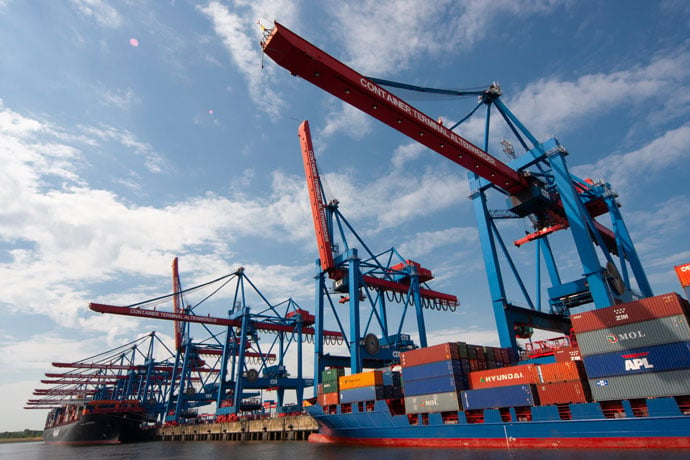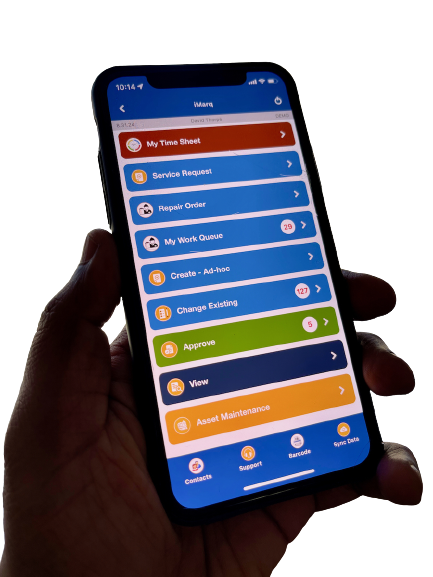Mobile apps have revolutionized all segments of the transportation industry. Research suggests that the overall revenue of mobile app development in 2020 was $318 billion. This figure is expected to increase to $613 billion by 2025. Mobile applications can simplify and streamline operations, improve team management and provide a stellar customer experience. Several logistics companies are already using mobile apps for real-time information about goods, the status of vehicles, and employees’ productivity. Like iMarq™ by Connixt, modern mobile applications are user-friendly, feature-rich, and highly customizable, which improve the efficiency of logistics processes and supply chain management.
In asset-intensive businesses, like the transportation sector, there is often misalignment between the field and office. The office and field workers are connected through archaic, paper-based documentation, spreadsheets, or sometimes radio-reporting methods followed by an old-fashioned manual data entry process. These traditional systems do not facilitate a free flow of accurate, real-time information between the back office and field workers. Without a transparent/precise view of their operations, businesses will not be able to deploy them efficiently. This disconnect causes delays in scheduling maintenance requests, increases downtime while waiting for new parts, and leads to non-compliant floor operations. Mobile applications can bridge this communication gap between field workers and business managers. Here is how mobile apps are transforming freight maintenance:
1. Warehouse Management
The freight industry is not just about transporting goods, it’s also about managing the warehouses efficiently. With mobile apps, all inventory information stored in a single cloud database is accessible on the app. This makes it easier to instantly check the inventory and store goods. Mobile apps facilitate an easy-to-use, accurate, and error-free system of managing goods.
Connixt’s iMarq integrates with the business’ back-end systems to track its inventories and maintain its operational assets.
2. Real-time Tracking of Cargo
Mobile applications track the location of cargo vehicles allowing the managers to know where the vehicle is at all times. Google maps and other GPS services can be linked with mobile apps to keep track of the cargo. Such GPS-based mobile apps track the distance covered, fuel used, the health of the vehicle, and the driver’s productivity. Such instant access to real-time information improves maintenance processes, including scheduling and maintenance requests.

Additionally, products like Connixt iMarq can be configured to read fault codes, update back-end systems with relevant information and to automatically generate service requests, material requests and more, thus saving time and increasing asset uptime.
3. Automation and Digitization
Digitization of archaic paper-based processes and forms is one of the biggest benefits of using mobile applications in the logistics and transportation sector. Mobile apps have interactive dashboards with features that can automate all paper-based processes, task scheduling, work orders and services orders, material parts requests, field approvals, signatures, order confirmation, etc. Thus, mobile apps save both time and effort when used in the logistics industry. Connixt’s mobile suite iMarq digitizes all your paper-based forms and processes for condition management, maintenance, reporting, etc.
iMarq’s mantra is digitizing and automating crew operations to make their work-life easier and more efficient. It integrates seamlessly with EAM/CMMS systems to provide managers with real-time reports, compliance/non-compliance, and maintenance reports.
4. IoT Integration
By accurately reporting on the vehicle’s health, IoT technologies are highly instrumental for freight maintenance. Reporting data includes temperature, pressure, location, etc. A preliminary analysis of data is done to check if all parameters are within the tolerance levels. If an anomaly is detected, the system can automatically create a maintenance/work order. Even the smallest things like oil changes and flat tires can be automatically reported and sent to the appropriate teams.
Connixt Mobile Extension Framework includes iOT framework with use cases in the areas of maintenance, asset tracking, and monitoring. It is working to offer non-invasive deployment of iOT solutions that integrate easily with standardized time, asset, work, maintenance, and compliance solutions.
To know more about Connixt’s unique solutions for your freight maintenance, book a demonstration today!





